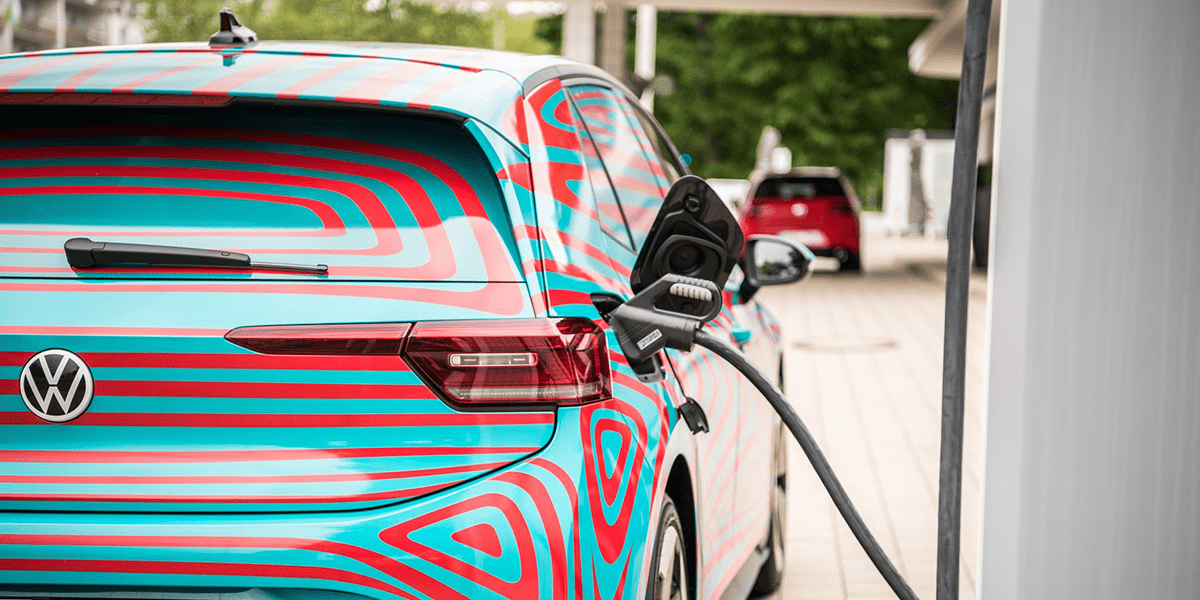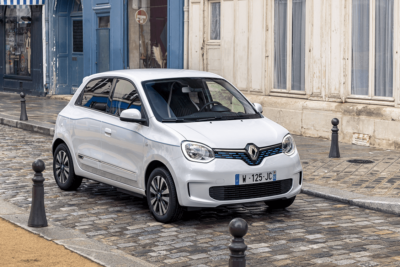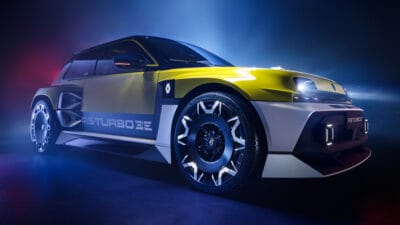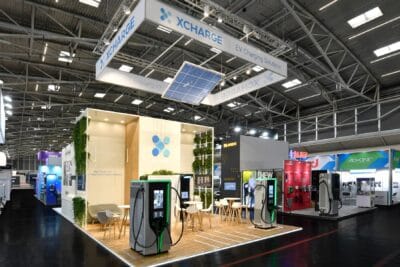Volkswagen ID charging infrastructure – now
As soon as Volkswagen puts some pressure, everything takes on a different dimension. That is what is happening with the switch to e-mobility in general – and the charging infrastructure in particular.
Christoph M. Schwarzer took a closer look during the manufacturer’s Charging Day. And, he saw a company that wants a few things sorted before flooding the streets with electric cars.
* * *
Take in Elli. The name stands for Electric Life. Elli belongs to the Volkswagen Group and bundles all charging and energy activities. The aim is to make battery electric mobility suitable for the mass market in the form of the ID series. When it’s not just experts with an affinity for technology who drive electric vehicles, but also everyday people, everything has to work – simple, clear and from a single source. Elli’s first product is Volkswagen Naturstrom (green energy). However, the mosaic of applications in the charging infrastructure is colourful, it consists of many parts, and only with a little distance can the whole picture be seen.
Elli also offers installation services for private customers in addition to the eleven kW Wallbox. Alongside a reasonably priced standard version (speculation: less than 1,000 euros including installation), Volkswagen will also offer an equally powerful 4G-capable version with extended software. A digital application could count and store electricity for a company car that is charged in the garage at home – given the state sorts out taxation and regulation. At the Volkswagen Charging Day in Berlin, the demand for clear guidelines for the industry to implement was heard everywhere.
Robots instead of inductive charging
In addition to the Wallboxes set up at home and at work, Volkswagen also offers a fully functional view of the near future: a robot establishes the plug-in connection with the vehicle. This automated conductive connection could be the end of inductive charging before it has even begun – a mini robot is cheaper and less expensive to standardise worldwide.
Time and again, the lectures at the Charging Day lead from now over to soon. Elli-CEO Thorsten Niklaß expects the first breakthrough with fleet operators. Professional fleet managers have long been concerned with the potential of a company’s internal infrastructure development. Besides, there are pragmatic solutions such as the ChargeX column. The startup supported by Volkswagen has developed a wall box that combines plug & play and a kind of master box which can extend to work at low thresholds. This includes sequential charge management, thus enabling the set up of a microgrid for a community’s underground car parks or the company car park – at lower costs and even with a connection such as 32 amps.
Digitalisation of the grid – inadequate
Many ideas that have been circumventing the e-mobile world at least since the beginning of this decade could finally become a reality with Volkswagen. In the foreseeable future, the ID.3 will be able to charge network-usefully and even bi-directionally. “I wonder how slowly the energy sector is developing,” says Thorsten Niklaß of Elli with slight criticism of the industry. The digitalisation of power grids is not progressing, although the energy turnaround (Energiewende) will require this sooner or later. Also, this opens up a broad field of activity for the electric car, because grid-connected and bidirectional charging is also a potential business model – unfortunately, the idea of one’s car as a player on the electricity market is still in the early stage. Meanwhile, the share of renewable energies, measured from the beginning of the year, is just under 47 per cent. Should the German or any other federal government finally take its foot off the legally prescribed expansion brake, the share will increase, and it must do so radically if the sector is to couple electricity, heat and transport.
The abbreviation VW, as Christian Hochfeld of the green think tank Agora Verkehrswende remarks without irony, could become synonymous with the German “Verkehrs-Wende”, the transport turnaround. Hochfeld outlines the necessity of changing the drive to limit climate change. The director of Agora Verkehrswende appears by no means a stranger to Volkswagen; on the contrary, his lecture fits so well with the expansion of the charging infrastructure that only a look out of the window onto the road where combustion engines dominate makes for a sobering reminder of where we are coming from and where we stand.
Plug&Charge instead of App and Chip
Back to charging: In addition to the initial identification by app or chip under the We Charge label, Volkswagen is preparing for automated Plug&Charge. This may seem banal to many industry experts because ISO 15118 is made for this, but that is precisely what it is all about: The moment Volkswagen exerts pressure, everything takes on another dimension. Nobody needs to like the company, and the trust lost through Diesel-gate has not been regained. Nevertheless, it should be apparent to everyone that Volkswagen, with its various brands from Audi over Porsche to Skoda, is not only the market leader in Germany and the EU but simply the global market leader. What happens here is affecting the world.
Volkswagen’s applications for charging infrastructure will be diverse, and of course, some solutions will be successful while others disappear. Employees reply rather evasively when asked about scenarios such as the first day of vacation when thousands of families start on their journey south on the same route at the same time. The industry does not think within limits – it is testing them out.
Reporting by Christoph M. Schwarzer, Berlin





5 Comments